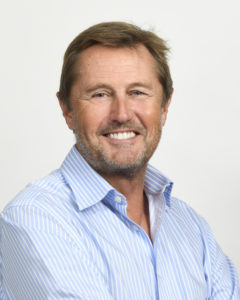The latest group of reinsurers to emerge in the Bermuda market is starting to look different. Even the name that once described the cohort has changed in the past five years.
Executive Summary
What happened to the class of Bermuda reinsurers that used to be called Hedge Fund Reinsurers? The chairman of one of them, Hamilton Re, says the moniker never really fit that company. Others typically lumped into the group are morphing their business models to put less focus on high-risk/high-return investments and more focus on reinsurance underwriting.And at least one member of the group of companies that AM Best used to refer to as “hedge fund reinsurers,” now dubbed “total return reinsurers” by the rating agency, insists that even the latest description isn’t accurate.
Responding to a question about Hamilton Re, and the competitive advantages that distinguish it from total return reinsurers such as Watford Re, Third Point Re and Greenpoint, David Brown, chair of Hamilton Re and Hamilton Insurance Group, explained his aversion to the term as a descriptor for Hamilton.

“I would argue we’re not a total return insurer. Generally what total return companies do [is] look to generate float that they then invest in an alternative strategy. They take the premiums they receive and other income—that float—and they invest that in alternative strategies. We’ve never done that,” said Brown, who was a founding investor.
“We invest our own capital that we all put up—we invest that in an alternative strategy. Any float we generate in our business goes to a very typical, very conservative, highly rated bond portfolio. So, we never use the float to invest in the alternative strategy.”
“It’s a different approach. We’re not trying to generate float,” he stressed.
Total Return Replaces Hedge Fund Moniker
In a late-August report titled “Emergence of Total Return Reinsurers,” AM Best analysts define a “total return reinsurer” as one that “contemplates risk and returns from both sides of the balance sheet, by deploying risk capital where the best opportunities present themselves, whether as investments or reinsurance contracts.”
Describing the evolution of a cohort of total return reinsurers, which emerged in an environment of soft reinsurance market conditions and low interest rates, the report notes that the initial “Hedge Fund Re” moniker was most fitting for two members of the group—Third Point Re and Greenlight Re—in their early days. In the HFR model, money was raised from private investors who were known to a prominent hedge fund manager, and executives were hired away from the traditional reinsurance industry to manage reinsurance operations, taking roles as CEOs, CFOs and CUOs. The investments were run by the hedge fund manager, with a separately managed account, while the reinsurance team targeted low volatility standard casualty quota share reinsurance business, the report says.
 Explaining the impetus for the startups circa 2012, the report notes that at a time when traditional reinsurers were taking most of their overall risk on the liability sides of their balance sheets and “parking most of the float in highly rated, relatively short-duration fixed-income investments,” hedge fund managers questioned how they could make money deploy capital to write underpriced reinsurance business and pursuing those investment strategies. The alternative solution was to find adequately priced, longer-tail, low-volatility reinsurance business to generate float, and investing that in riskier asset classes for higher risk-adjusted asset returns.
Explaining the impetus for the startups circa 2012, the report notes that at a time when traditional reinsurers were taking most of their overall risk on the liability sides of their balance sheets and “parking most of the float in highly rated, relatively short-duration fixed-income investments,” hedge fund managers questioned how they could make money deploy capital to write underpriced reinsurance business and pursuing those investment strategies. The alternative solution was to find adequately priced, longer-tail, low-volatility reinsurance business to generate float, and investing that in riskier asset classes for higher risk-adjusted asset returns.
AM Best describes the model of the second generation of total return reinsurers as “the partnership model.” Under this model, exemplified by Harrington Re and Watford Re, outside experts are used for both investing and underwriting. Reinsurance business is sourced from partners that are large, highly rated reinsurers (AXIS Capital and Arch Capital, in the two examples), and investment portfolios with varying risk/return and liquidity characteristics are managed by large, multistrategy investment firms.
Identifying a potential third generation of total return reinsurers, the AM Best report said there are “marketplace discussions” around a model that takes the form of a special purpose vehicle “designed to aggregate several unrelated alternative asset strategies with a common source of reinsurance business.”
The report explains that the SPV can be an “incorporated cell captive,” capitalized by investors who are the clients of investment managers that own the cell. The underwriting entity involved could be a reinsurer or a managing general underwriter. Unlike the other two models, the SPV model allows the underwriting entity to match reinsurance business with multiple asset managers—increasing diversification and putting a limit on the influence of any single asset manager.
How Hamilton Is Changing
AM Best didn’t link Hamilton to any of the three iterations of total return reinsurers but did list them as a composite of total return reinsurers that have failed to produce underwriting profits in the last five years. According to the AM Best report, Third Point, Watford Re, Greenlight, Hamilton Re and Harrington Re together produced a five-year average combined ratio of 111.2 as of year-end 2019. (Editor’s Note: Financial reports on Hamilton Re’s website show similar underwriting results with a 2019 combined ratio of 115.1.)
Asked specifically whether AM Best is wrong to lump Hamilton into the total return reinsurer group, Brown said, “Yes. I would think so. But people pigeon hole you as they see you.”
He added that he believed that over time, people will realize this as Hamilton’s proportion of assets invested in non-alternatives “grows and grows.”
“Our alternative strategy has been so successful that it keeps outpacing the growth of our bond portfolio. Even though our float keeps growing—our bonds have done reasonably well, the alternative strategy has been so successful it keeps growing,” he stated.
Brown, who spoke to Carrier Management early in September at a time when he was serving as interim CEO of Hamilton Re, said the board would seek someone to build on the company’s aspiration of becoming a “globally diversified specialty insurance and reinsurance business.” That strategy started taking shape when Pina Albo took her position as chief executive officer of Hamilton Insurance Group in February 2018, Brown said. (Albo replaced the original Hamilton CEO, Brian Duperreault, who left to take his current position as CEO of American International Group, leaving Brown to fill the role on an interim basis for nine months until Albo officially took the reins.)
 “Our vision hasn’t changed. [And] Pina has been executing on that, as [demonstrated] by our activities over the last few years [with] the acquisition of Pembroke. (Related article, “Hamilton CEO Albo: Focus Is on Realizing Potential of Pembroke/Ironshore Europe DAC Acquisitions.”)
“Our vision hasn’t changed. [And] Pina has been executing on that, as [demonstrated] by our activities over the last few years [with] the acquisition of Pembroke. (Related article, “Hamilton CEO Albo: Focus Is on Realizing Potential of Pembroke/Ironshore Europe DAC Acquisitions.”)
“We’re now at scale in Lloyd’s. We have our Bermuda operation. We have our offices in other parts of the world now as we push this specialty business theme. So, really what we need in the Bermuda [Hamilton Re] CEO is somebody who’s going to help us enhance our ability to achieve those goals. We’re looking for somebody with obviously great market presence, great experience, particularly in lines away from our core competency in Bermuda, which has always been the property-catastrophe business,” Brown said. “We are in lines in Bermuda other than property cat, but that was our original core competency—and still is. We’re very strong there,” he said, expressing the desire to find someone with a skillset and experience to enhance Hamilton’s capabilities in all those specialty businesses.
A day after the CM interview, Hamilton Insurance Group announced that Megan Thomas would take the reins of Hamilton Re as CEO, allowing Brown to step down from filling the role on an interim basis. Among other experiences, Thomas was previously a chief underwriting officer for reinsurance for AXIS Capital and also a CUO for liability lines at AIG.
Carrier Management asked Brown whether the go-forward strategy is to move Hamilton more in the direction of specialty insurance business than reinsurance in the future.
“It will depend on the markets, but I suspect over time you’re right that we might be more insurance-y than reinsurance,” Brown said. “We’ll always have both. But as our capital keeps growing and market opportunities present themselves, I would imagine we might find insurance markets more attractive. But we’ll see.”
“We’ve already, with our Pembroke acquisition, leap-frogged ourselves into a position where we were 50/50 insurance and reinsurance. So, we’re already there, and we have the ability to move between insurance and reinsurance as market opportunities arise.”
Financial information published on Hamilton’s website reveals that almost 59 percent of total net written premium volume of $187.5 million was described as “property/short-tail” in 2015, with only 41 percent described as “casualty/long-tail.” Two years later, in 2017, long-tail business grew to more than 60 percent of a $394.5 million total. Last year, casualty edged out property slightly—coming in at 51 percent and 49 percent, respectively, on a net premium basis—with total net premiums rising to $489.5 million overall. (On a gross basis, property is 57 percent of a $730.9 million total.)
As for Hamilton’s competitive edge in the current market, Brown said, “We have all the platforms. We’ve got Lloyd’s platform, Bermuda platform…We’re a secure company [and] we don’t have a lot of legacy issues like a lot of companies do. We’ve always been very conservative in our reserving. So, we don’t have issues over inadequate reserves for our business. We feel we have a very strong and clean balance sheet, and a perfectly positioned platform right now to write into these markets.”

More Transformations in the Works
Like Hamilton, none of the other reinsurers that the AM Best report included in the “total return reinsurer” cohort are staying wedded to the strategies that defined them on Day 1. In fact, on the same day that Hamilton Re announced that Thomas would be the next CEO, Greenlight Re announced changes in its executive ranks, and rumors surfaced that Watford Re could be bought out by a group led by its underwriting partner, Arch Capital.
Third Point Re Chair Sid Sankaran, speaking at the KBW Insurance Conference on the very same day, described the impact of a deal to merge with Sirius Group (announced in August) saying, “This is a transaction that completely turns the page on the ‘Hedge Fund Re’ moniker.”
And in a virtual Monte Carlo press conference held by another rating agency a day later, Brian Schneider, a senior director of Fitch Ratings, alluded to rumors that Harrington Re—connected with AXIS—could also be up for sale and repurposed.
Adding the Chubb-BlackRock venture ABR Reinsurance Ltd , Fidelis Insurance Holdings and Enhanzed Reinsurance Ltd. to Fitch’s list of hedge fund reinsurers started between 2012 and 2018, Schneider noted that the group has struggled overall because of soft market underwriting conditions of recent years and difficulties in achieving their promised higher risk-adjusted investment returns. He identified Fidelis as the most profitable on the underwriting side, and Hamilton Re as the most successful on the investment side, adding that the recent Pembroke acquisition at Lloyd’s opens up the prospect of better underwriting results for Hamilton.
Third Point had already started improving from repositioned underwriting and investment strategies, prior to the announcement of the Sirius deal, which will bring scale benefits as well, Schneider said.
In May 2020, coincident with Third Point’s first-ever report of a quarterly underwriting profit, CEO Dan Malloy detailed a two-year effort to remake what was a hedge fund reinsurer for the first six years of its existence—”willing to run a higher combined ratio in order to get sticky assets”—into a specialty reinsurer.
“It wasn’t like we were writing 105 because we were unlucky. We were writing 105 and expecting 105 because we didn’t write property cat,” Malloy said during a CM interview, also describing actions to pare back on homeowners quota shares and unprofitable nonstandard auto business while exploring opportunities in commercial auto, excess casualty and professional liability, and supporting MGAs.
At the KBW virtual conference this month, and on an early August conference call announcing the merger with Sirius to ultimately create SiriusPoint, Sankaran described go-forward transformations on both the underwriting and investments sides. With gross premiums vaulting from $0.6 billion to $2.5 billion (based on 2019 figures), Sirius adds an extensive branch system that offers a range of reinsurance products to clients in more than 150 countries; a sizable accident and health component through two specialized MGUs; access to admitted and nonadmitted paper in Europe, the U.S., Bermuda and Lloyd’s; and brings insurance into the mix as well, said Sankaran, who will serve as CEO and chair of the merged company, with Malloy taking an underwriting executive role. On the investment side, traditional investments will be the vast majority of SiriusPoint’s go-forward portfolio, and that will be outsourced to a diversified range of third-party asset managers, while Third Point LLC, the hedge fund, will still manage the rest of the investment portfolio dedicated to specialty asset classes, Sankaran said.
 “This is the definition of a strategic and transformative deal,” he said at the KBW conference. “Underwriting comes first,” he said repeatedly. Malloy noted that the deal comes at a time of harder market conditions when SiriusPoint’s capacity will be welcomed by brokers and clients.
“This is the definition of a strategic and transformative deal,” he said at the KBW conference. “Underwriting comes first,” he said repeatedly. Malloy noted that the deal comes at a time of harder market conditions when SiriusPoint’s capacity will be welcomed by brokers and clients.
In mid-September, Third Point also announced an investment in a startup MGA in Bermuda, Arcadian Risk Capital, taking a minority stake in the company that plans to write excess casualty and profession lines insurance under the direction of John Boylan, a 30-year veteran of the industry, with plans to open offices outside of Bermuda as its operations grow.






















 Northern California Flooding This Weekend Caused by Heavy Rain, High Tides
Northern California Flooding This Weekend Caused by Heavy Rain, High Tides  Howden US Tells Judge Brown & Brown Employees Fled Due to ‘Mistreatment’
Howden US Tells Judge Brown & Brown Employees Fled Due to ‘Mistreatment’  Nearly Half of 100 Largest P/C Insurers Destroy Value: ACORD
Nearly Half of 100 Largest P/C Insurers Destroy Value: ACORD  What to Expect in 2026: U.S. P/C Results More Like 2024
What to Expect in 2026: U.S. P/C Results More Like 2024 












